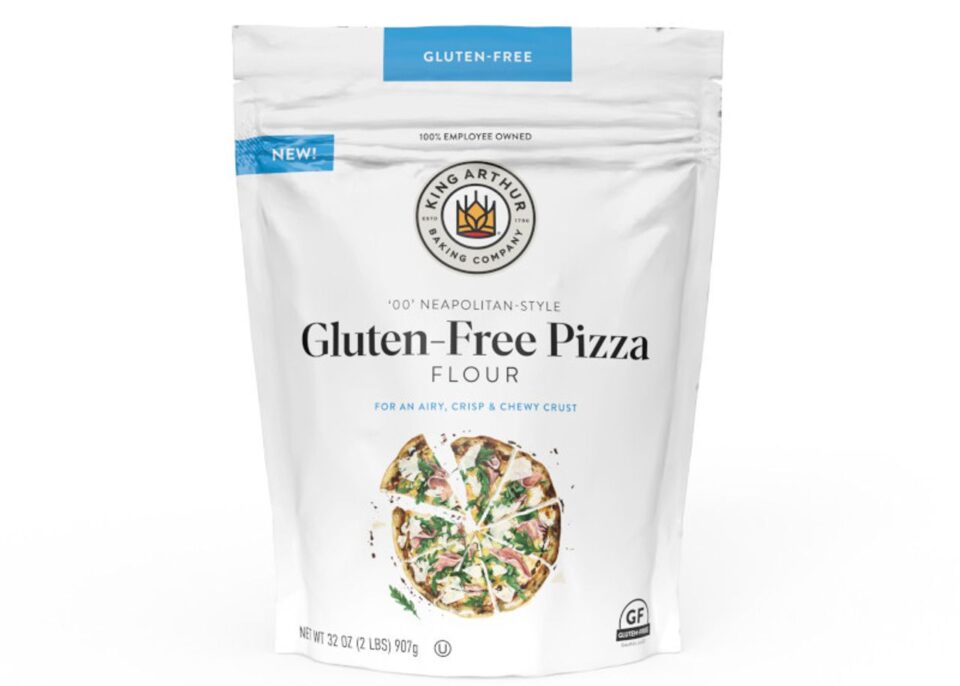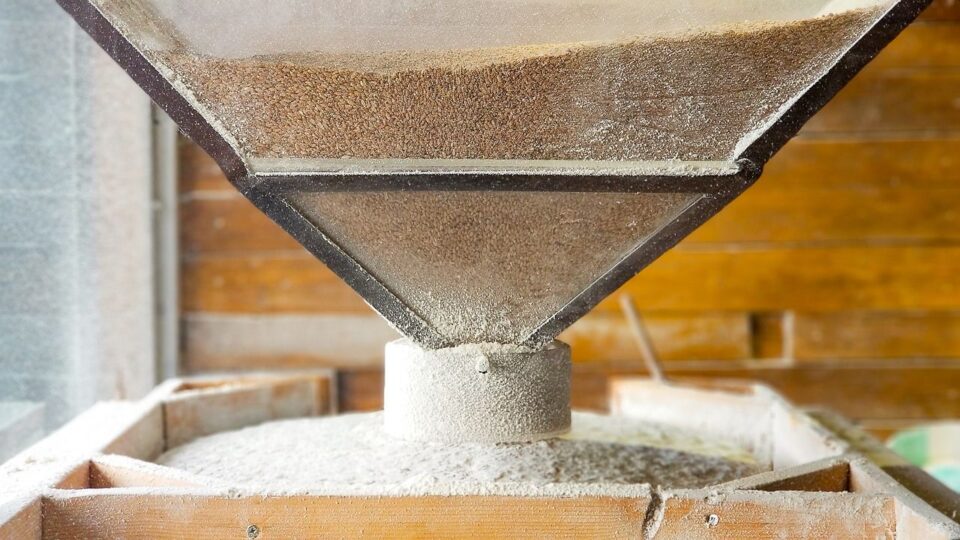By and large, the choice of a 00 flour substitute lives in the changes to texture you’re willing to accept. For any food substitution in a recipe, textures and flavor changes are often expected. However, as we’ll see in the ensuing discussion, texture is the key quality that defines 00 flour.
Of course, that’s not to say that flavor isn’t relevant, it’s simply that capable and simpler substitutes for 00 flour are relatively easily available, though often at the cost of texture. The defining trait of 00 flour is that it’s very finely milled – almost as fine as it can be. As such, a substitution is bound to be coarser and bring a change in texture.
With that in mind, some common substitutes for 00 flour are all-purpose flour, cake flour/pastry flour, some gluten-free flours, and maida flour. With the basics covered, let’s get into details of these alternatives and our options.
Table of Contents
Top 00 Flour Substitutes Worth Considering
1. All-Purpose Flour

All-purpose flour is perhaps the most readily available alternative for 00 flour that you could put to use. It is not the ideal substitute and the dough will not be as deliciously impressive. Yet, it is easily available, most people know how to work with it, and it is fairly easy to work with.
However, the grain size and protein content are both different from 00 flour, so you will see a change in texture. It cannot do the job that 00 flour does in pizza dough, after all, that is part of the specialty of 00 flour. But it can do a decent job for your baking needs, which could be acceptable.
2. Bread Flour
Bread flour is a useful alternative to 00 flour. It doesn’t have the same fine grind size, but bread flour can work in most doughs for excellent flavor and texture. And while it might not be able to replicate the success of 00 flour in Neapolitan pizza, bread flour is the heart of the NY-style pizza, which makes it perhaps as useful.
For people trying to cook pizza at home, it is very likely that bread flour would be more useful for your pizza dough as compared to 00 flour. Though, of course, preferences can vary.
However, where substitution for 00 flour is concerned, you will want to use regular bread flour. It is also available as “strong” bread flour, which has a protein content higher than 13%. That would be a significant change from the protein content, and therefore, expected texture when compared to conventional bread flour.
3. Pastry Flour
The fine, soft-textured pastry flour with a low protein content seems like an excellent alternative to 00 flour. Its gluten/protein content is quite similar to 00 flour, and it is milled finer than all-purpose flour, though not as fine as 00 flour.
Still, that’s a tradeoff that most of us would be willing to make. It’s relatively more easily available, and if you love baking, pastry flour has tons of uses. So, this alternative to 00 flour would be a bit more useful.
As a substitute for 00 flour, pastry flour is especially good if you intend to make fine pasta with a smooth and amazing texture. You could use it for pizza dough as well, though bread flour would still be a better choice for that purpose.
As with other flours, you can substitute pastry flour for 00 flour in a 1:1 ratio by weight.
4. Some Gluten-Free Flours

Want to stay away from gluten while handling your pizza dough and pasta needs with 00 flour? Well, gluten-free flours would be the likely choice, but with some caveats. As you might guess, it’s not possible to use just any gluten-free (GF) flour.
You will want this gluten-free flour to be as close to 00 flour in texture, grind, and protein content. Some gluten-free pizza flours are fit for the purpose. The idea is to have a similar fine grind and texture as 00 flour, while substituting another protein to make up for the lack of gluten.
A fairly well-known product in this category is King Arthur’s “00” gluten-free pizza flour. However, it’s still based-off gluten-free wheat, so that’s something to keep in mind if you choose to go this route. Several other products are available in this category, and you will benefit with a quick online search for such options.
Flours for this category can be a bit more difficult to find in grocery stores, compared to regular GF flours, so check the label carefully before your purchase. Additionally, you might want to check specific requirements to make sure that the flour is fit for your purpose.
5. Maida Flour
Maid flour, or simply maida, is a flour often employed in Indian baking, and the one most often used for the famous naan bread. It is a processed flour, quite similar to all-purpose flour, but usually with a finer texture. In some Indian culinary uses, the terms maida flour and all-purpose flour are used interchangeably.
That said, maida flour is usually a bit more coarse than 00 flour and can have a lower protein content. It can work as a decent alternative to 00 flour, though its use in leavened breads is usually quite limited because of the low protein (gluten) content.
Getting A Better Understanding Of 00 Flour And Its Uses
What Is 00 Flour?
The term 00 Flour is derived from Italian nomenclature and classification of flour, depending on how fine (or coarse) the grain size is. Classified as Type 00 flour (Italian: tipo doppio), this flour has the finest grind size. Other classifications of flour include Types 0, 1, and 2, with 2 being the coarsest.
The fine grind of the 00 flour often helps with the smooth texture of the prepared goods. The most popular uses of this flour include making Neapolitan Pizza or homemade pasta.
Availability of this flour can be a slight issue if you’re outside Italy. That’s what often prompted the need for substituting 00 flour in a recipe. Thankfully though, its availability Stateside has considerably improved over the past few years, and many local grocery stores have the flour available. Depending on availability, you could also order it online.
Apart from texture, this dough is also useful for making the thin crust that Neapolitan pizza is famous for. The relatively coarser flours cannot handle the same level of finesse and are often liable to develop tears. However, when used for making pasta, you have more room to work with. Though even when used for pasta, 00 flour allows relatively thin pasta that could be put to a lot of uses.

The Homemade Story – What Can You Use 00 Flour For?
For many people, a belief has been reinforced, which says that if you want a good Neapolitan Pizza, it should be made with 00 Flour and it can be made at home. That first part is still somewhat understandable. After all, the AVPN regulations for the use of the collective trademark “Verace Pizza Napoletana” encourages the use of 00 flour. They also allow some Type 0 or Type 1 flour to be added as well, if needed.
It’s the second part that poses a problem – the one which says you could make it at home. This pizza is usually made in wood-fired ovens that can reach a base temperature in the range of 716°F (380°C) to 806°F (430 °C).
Household ovens cannot reach this temperature. Modern home ovens stay in the temperature range of up to 550°F, while older ovens could be lower. So, yeah, this is not a pizza you make at home.
But if you’re familiar with the art of pizza making, and have a capable oven, you could give the New York-style pizza a try. Plus, it uses the more readily available bread flour, which might make things easier.
On a different note, if you intend to use 00 flour for making pasta or its other uses, go right ahead and enjoy the wonderful texture that it brings to food.
Using And Choosing Your 00 Flour Substitute
As the discussion here shows, there are limited options when you want to substitute 00 flour, but there are a few that can work quite well. It should also be considered if you really do need 00 flour, especially for home use, since it might be possible to get better results with other options or recipes.
That said, do not be shy of experimenting or mixing flours to get the best results that meet your expectations and palate. 00 flour is quite extraordinary for its uses, but using well-chosen substitutes should get decent results as well.

